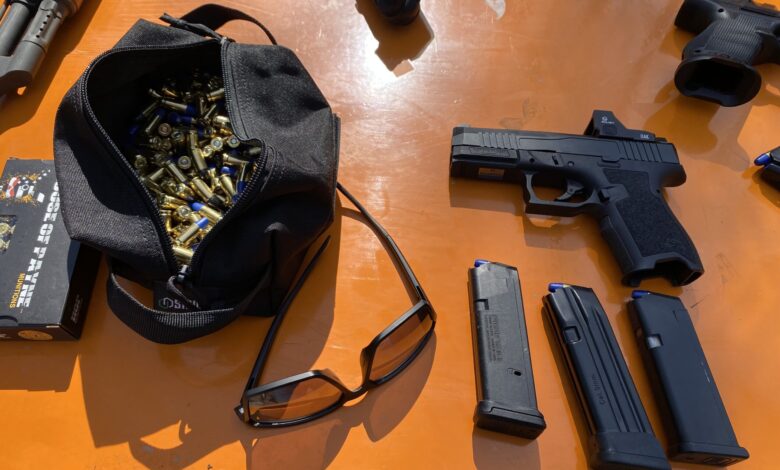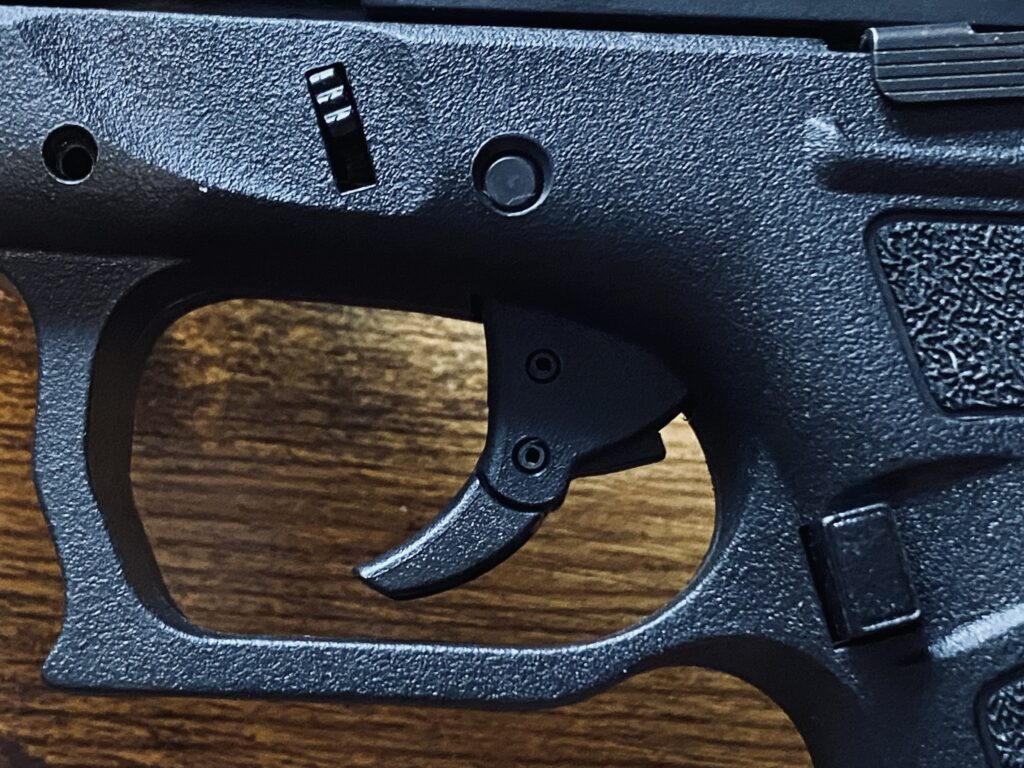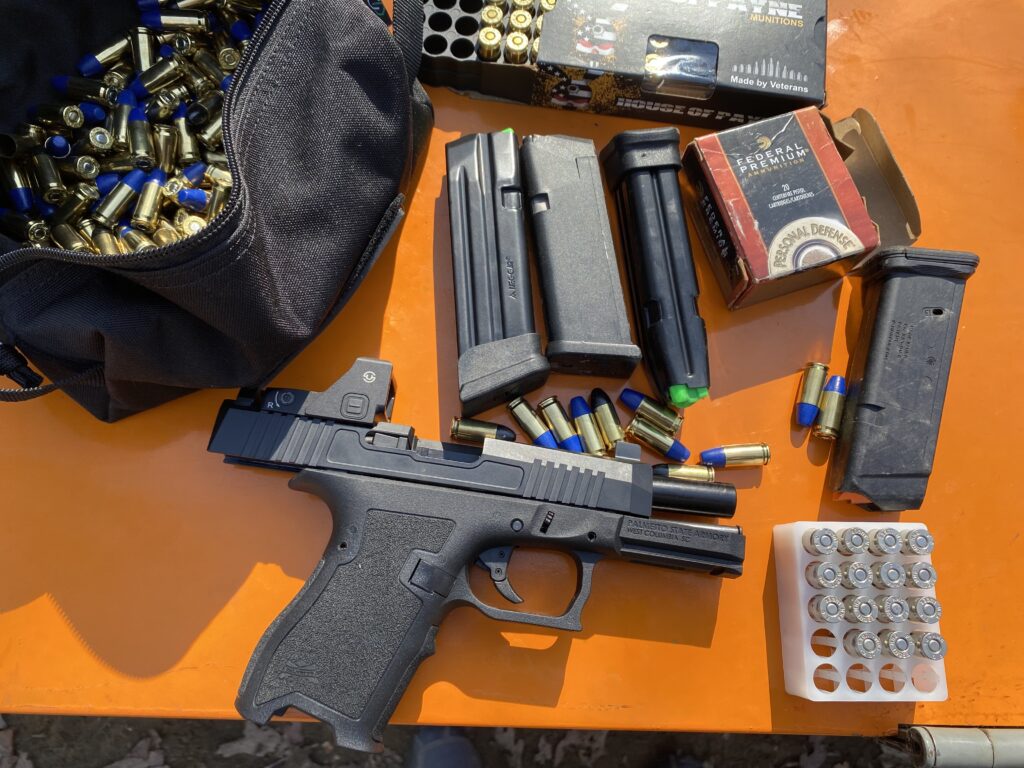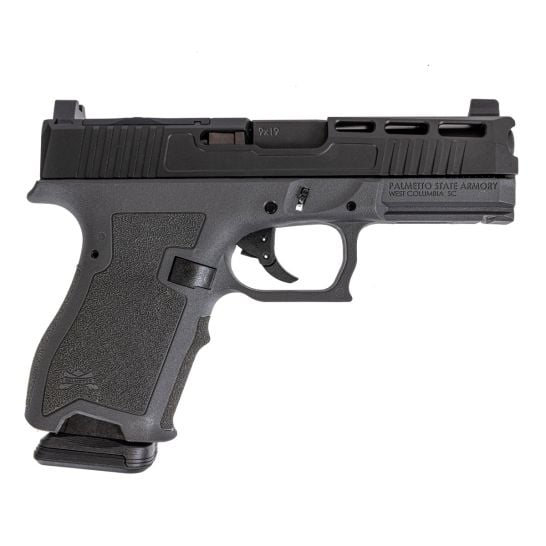Is This Budget Glock Clone Finally Worth It?

I’ve been wanting to get my hands on a PSA Dagger for a while now, but I always hesitated because of the issues I kept hearing other shooters mention.
What drew me to it was that it’s a Glock 19 clone with interchangeable parts.
Internals
The PSA Dagger is fully compatible with Gen 3 Glock parts, making upgrades and swaps a breeze.
One notable upgrade PSA made over the standard Gen 3 Glock is the guide rod—they went with a single-piece stainless steel guide rod instead of the polymer one Glock uses. A small but welcome improvement straight out of the box.
If you’re hesitant about PSA’s factory internals, you could always swap them out with a Glock OEM parts kit. But honestly, aside from the front sight loosening up, I haven’t run into a single issue with the Dagger as it comes from the factory.
The Trigger
The Dagger’s trigger has a different take on safety compared to Glock’s classic bladed trigger. Instead of a vertical safety bar running down the center, the Dagger’s trigger shoe has a break point about halfway down.

Functionally, Glock’s design offers a slightly larger trigger activation area, but unless you’re pulling the trigger with just the tip of your finger way up high, you won’t notice much difference. Both do what they’re supposed to—go bang when you need them to.
That said, I actually prefer the Dagger’s trigger. It eliminates some of the spongy feel you get with a stock Glock trigger, delivering a more defined wall and cleaner break. The reset is a bit less tactile, but overall, it gets the job done.
Grip and Feel
When it comes to handling the Dagger, I’ve got no complaints. The grip angle feels natural, and the overall ergonomics work well. It locks in nicely, though I might slap on some Talon Grip for a bit more traction—that’s just personal preference.
The single-finger swell actually fits my medium-sized hands better than the old Gen 3 Glock finger grooves ever did. Glock finally scrapped those in Gen 5, but PSA seems to have landed on a solid middle ground with their design.

One thing I really appreciate is the extended beavertail, which allows for a high grip without any concern about slide bite. The slight magwell flare under the pinky also adds just enough support to help maintain a firm, consistent grip.
Since its initial release, PSA has taken feedback from the market and made some updates to address the early concerns.
Now, it was time to see for myself.
But first, I needed a red dot. Since the PSA Dagger is a budget-friendly pistol, coming in around $320, I didn’t want to spend a ton on an optic. So, I jumped on Amazon to find the best pistol red dot for under $150. After doing some research and watching YouTube reviews, I settled on the Zulisy Oak, which ran me about $100.
That means, for under $500, you could have a red dot-equipped pistol ready for your vehicle, bug-out bag, nightstand, or even carry it—if you’re comfortable doing so.
Once I mounted the red dot and bore-sighted it, I headed to my buddy’s backyard range.
My biggest concern? Reliability.
I put 300 rounds through the Dagger without a single issue. I ran 115-grain FMJ, 124-grain Federal Hydra-Shok, 124-grain flat-nose FMJ, and 147-grain flat-nose poly ammo from HOP Munitions.
The Dagger ate everything without a hiccup. To test reliability further, I used different magazines.
I started with the Magpul polymer mag that ships with the Dagger, then swapped to a Glock 19 OEM mag, and finally, the new Mec-Gar metal Glock 19 mags. Again—not a single malfunction.

I’ve gotta admit, I’m pretty damn impressed. I’ve said time and again that I wouldn’t trust my life to a PSA Dagger, but after running it with zero malfunctions…I might have to rethink that. That said, I still need to put more rounds through it before considering it for carry.
Another bonus is that the Dagger fits in my Tenicor Velo and Tier 1 Concealed holsters, both designed for Glock 19 and 17 models. So, if you’ve got a holster for either, chances are the PSA Dagger will fit just fine.
Now, onto the one negative I found with this pistol so far.
The stock sights.
It comes with suppressor-height sights but no threaded barrel. I’ve never been a fan of suppressor-height sights, so that’s a minor gripe. However, by the end of my range session, I noticed the front sight post had come loose. I had heard others mention this issue, and sure enough, it happened to me.

A little Loctite and a quick tightening will fix it—not a deal-breaker, especially since I’m running a red dot anyway.
All in all, I like what Palmetto State Armory has done with the Dagger and plan to keep testing it.
I’ve got a Faxon Glock 19 barrel sitting around, so I’ll swap that in, add some Talon Grip material, and keep running the Mec-Gar metal mags to see how it performs. I may even take it through one of the pistol courses I’m attending this summer to see how it holds up over 500+ rounds in a single day.
Stay tuned!
Where To Buy








